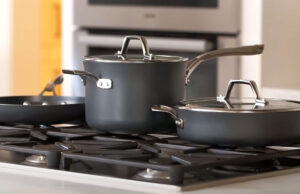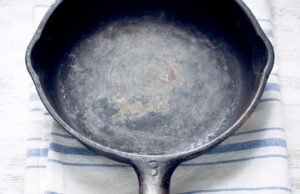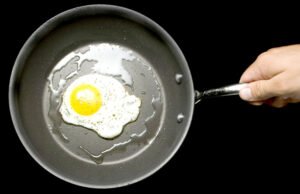As an Amazon Associate, I earn from qualifying purchases at no extra cost to you.
LG Dishwasher Problems Troubleshooting (Fix Issues Fast)
Are your LG dishwasher problems frustrating you? Don’t worry! This guide will help you fix common dishwasher issues quickly and easily, saving time and money while keeping your kitchen stress-free.
Most problems are simple to fix with basic checks, cleaning, or small adjustments. Understanding common error codes, water flow, drainage, and unusual noises helps prevent bigger issues. Regular maintenance keeps your dishwasher running smoothly.
Knowing how to troubleshoot effectively saves money and extends the life of your machine. Always check filters, hoses, and spray arms first. By following step-by-step guidance, you can handle most problems confidently.
How to Troubleshoot LG Dishwasher Problems Easily
Checking Power Supply and Electrical Issues
First, make sure your dishwasher is getting power. Sometimes, the machine does not start due to a tripped circuit breaker or unplugged cord. Check the outlet and reset the breaker if needed. Also, inspect the power cord for damage.
Next, try pressing the start button firmly. Some models require you to hold the button for a few seconds. If the dishwasher still doesn’t work, check the control panel for error codes. Each code tells you the exact problem.
Sometimes, internal electrical issues like a faulty control board or loose wire connections can cause trouble. If you are comfortable, turn off power and inspect internal wiring carefully. Otherwise, call a professional.
Checking power is simple but essential. Always start here before trying other fixes. It saves time and avoids unnecessary parts replacement.
- Ensure dishwasher is plugged in.
- Check circuit breaker.
- Inspect power cord for damage.
- Look for error codes on control panel.
Inspecting Water Supply and Hoses
Water issues are very common. First, check if the water supply valve is fully open. Sometimes, a partially closed valve restricts water flow, causing errors. Make sure the hose connecting to the dishwasher is not kinked or pinched.
Next, check the water inlet screen. Small debris can block it and reduce water pressure. Clean it gently with a brush or rinse under running water. Also, make sure hoses are securely connected to prevent leaks.
If your dishwasher is not filling, consider checking the float switch. The float ensures the machine does not overfill. If it is stuck, water cannot enter the dishwasher properly. Gently lift it to see if it moves freely.
Regularly inspecting hoses and water supply prevents common problems. Clean and check connections often to keep water flowing smoothly.
- Ensure water valve is open.
- Check hoses for kinks or damage.
- Clean the water inlet screen.
- Test float switch movement.
Cleaning Filters and Spray Arms
Dirty filters can block water flow and reduce cleaning performance. Remove the bottom rack and locate the filter. Take it out and rinse thoroughly under running water. Small brushes can help remove stubborn debris.
Spray arms also get clogged over time. Remove the arms and check the holes for debris. Use a toothpick or thin wire to unclog blocked holes. Rotate the arms manually to make sure they move freely.
Regular cleaning prevents poor performance and strange noises. Many users skip this step, causing repeated dishwasher problems. Doing it monthly keeps the machine efficient.
- Remove and clean filters.
- Inspect spray arms.
- Clear blocked holes with a toothpick.
- Test rotation after cleaning.
Resolving Drainage Issues
Dishwashers that do not drain properly can leave standing water at the bottom. Start by checking the drain hose for kinks or clogs. Detach it and rinse with water to clear any blockages.
Next, inspect the air gap if your sink has one. Remove the cover and clean any debris inside. Also, check the dishwasher drain pump. If it is jammed with food particles, carefully remove the obstruction.
Using too much detergent or improper placement can also cause drainage problems. Ensure dishes are loaded correctly and only recommended detergent amounts are used. Proper cleaning and maintenance prevent recurring issues.
- Check drain hose for clogs.
- Clean the air gap.
- Inspect and clear drain pump.
- Use correct detergent amounts.
Fixing Strange Noises
Unusual noises are common in LG dishwashers. Rattling may come from loose dishes or utensils hitting the spray arm. Ensure nothing blocks the spray arms.
Grinding or humming noises can indicate debris in the pump or filter. Remove and clean filters, then check the pump. Sometimes, foreign objects like broken glass or small food pieces get trapped inside.
Motor or mechanical problems can also cause noise. If cleaning and adjusting items do not help, consider checking the motor assembly. Professional help may be needed for internal mechanical repairs.
- Secure all dishes.
- Remove debris from filters and pump.
- Check spray arms for blockage.
- Inspect motor for unusual sounds.
Understanding Error Codes
LG dishwashers display error codes for different problems. E1 usually indicates water supply issues, while E2 shows a drainage problem. Check your user manual for other codes.
Once you know the code, follow the suggested fix. For water-related errors, check valves, hoses, and float switches. For drainage codes, clean the filters, hoses, and pump.
Regularly reviewing error codes helps prevent small issues from becoming major repairs. Writing down repeated codes can also help technicians diagnose persistent problems faster.
- Note the displayed error code.
- Refer to the manual for meanings.
- Follow recommended fixes for each code.
- Track repeated issues for professional help.
| Common Problem | Likely Cause | Quick Fix | Tools Needed |
|---|---|---|---|
| Dishwasher won’t start | No power | Check outlet and breaker | None |
| Poor cleaning | Clogged filter | Clean filters and spray arms | Brush |
| Not filling with water | Water valve closed | Open valve, check float | None |
| Standing water | Clogged drain hose | Clear hose and pump | Wrench |
| Strange noise | Loose dishes | Rearrange dishes | None |
| Error code E1 | Water supply issue | Check hoses/valve | None |
| Error code E2 | Drainage problem | Clean drain | None |
Common LG Dishwasher Error Codes and Solutions
Understanding error codes makes troubleshooting easier. E1 means water isn’t entering, often due to a closed valve or blocked hose. E2 shows drainage issues, usually from clogs or pump problems.
Other codes include E3, indicating motor issues, and E4, signaling a temperature problem. Always refer to your manual for specific code details. Clearing error codes often requires checking connections, cleaning filters, or resetting the machine.
Error codes save time by pinpointing problems. If recurring, note them and contact support for parts or professional service. Preventive maintenance reduces repeated error occurrences.
How to Maintain LG Dishwashers for Longevity
Proper maintenance keeps your dishwasher running longer. Clean filters monthly and inspect spray arms for blockages. Wipe the door gasket to prevent leaks.
Use recommended detergent and avoid overloading dishes. Check hoses for kinks and cracks. Run an empty cycle with dishwasher cleaner periodically to remove buildup.
Preventive steps reduce repair frequency and improve efficiency. Observing small signs like leaks, noises, or error codes early can save money and stress.
Tips for Saving Money on Repairs
Many dishwasher problems can be fixed at home. Start by cleaning filters, hoses, and spray arms. Checking power supply and water valves prevents unnecessary service calls.
Document error codes and symptoms before calling a technician. This helps them diagnose faster, reducing labor costs. Consider replacement parts online instead of paying store markups.
Simple preventive habits like proper loading, correct detergent, and regular cleaning extend your dishwasher’s life. Investing a few minutes monthly saves big in repairs over years.
Frequently Asked Questions (FAQs)
Is it normal for my LG dishwasher to make loud noises?
Yes, some noises are normal. Clinking sounds happen when dishes touch each other. However, grinding or humming may indicate debris in the pump or filter. Always check and clean filters, remove any trapped items, and ensure dishes are correctly loaded. Persistent mechanical noises may require professional inspection. Regular maintenance prevents many noise-related issues and helps your dishwasher run quietly.
Can I use any detergent in my LG dishwasher?
No, always use detergents recommended by LG. Using regular dish soap can cause excessive suds, leaks, and poor cleaning. Detergent pods or powder designed for dishwashers work best. Proper detergent amounts ensure effective cleaning and prevent clogs. Following manufacturer guidelines protects the machine’s internal parts and maintains performance over time.
Do I need to clean the filters regularly?
Yes, cleaning filters is essential. Dirty filters block water flow and reduce cleaning performance. Remove them and rinse under running water monthly. Check for stuck debris and gently scrub if needed. Regular cleaning prevents odors, standing water, and expensive repairs while keeping dishes sparkling clean.
Is it safe to check internal wiring myself?
It can be safe if you turn off power and follow instructions carefully. However, if you are unsure, call a professional. Mistakes with wiring can cause shocks or further damage. Focus on basic inspections like checking connections or loose wires, and avoid complex electrical repairs unless experienced.
Can a clogged spray arm affect cleaning?
Yes, clogged spray arms block water flow, reducing cleaning efficiency. Remove and clean the arms regularly. Ensure all holes are clear using a toothpick or thin wire. Proper rotation of the spray arms ensures water reaches every dish, keeping performance optimal.
Do I need to worry about standing water?
Yes, standing water indicates drainage problems. Check the drain hose, pump, and air gap. Remove clogs and ensure proper water flow. Ignoring standing water can lead to odors, bacteria, and even leaks. Regular maintenance avoids these issues.
Is it necessary to monitor error codes?
Yes, error codes help identify problems quickly. They indicate water, drainage, or temperature issues. Checking codes early prevents major repairs. Always follow the manual’s guidance for each code. Recording recurring codes helps technicians provide faster solutions.
Can overloading the dishwasher cause problems?
Yes, overloading prevents proper water circulation and may trigger error codes. It can also cause poor cleaning and increase wear on parts. Arrange dishes properly, leaving space between them for water to reach all surfaces. Following load guidelines improves performance and longevity.
Final Thoughts
LG dishwashers are dependable, but small issues can disrupt your kitchen. Regular maintenance, observing error codes, and understanding simple troubleshooting methods save time and money. Acting early prevents bigger repairs and keeps your dishes spotless. With care and attention, your dishwasher will stay efficient for years.




